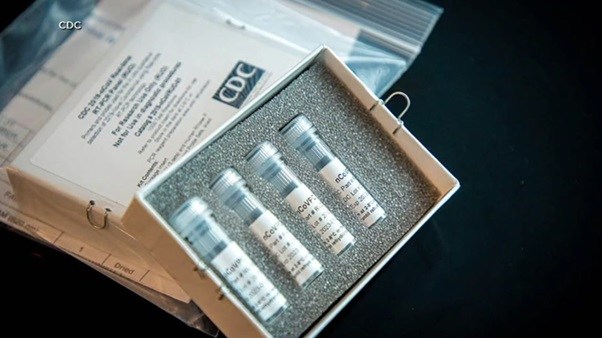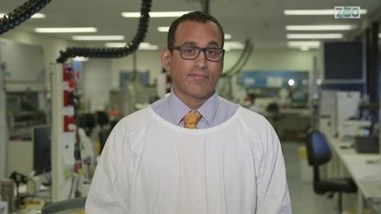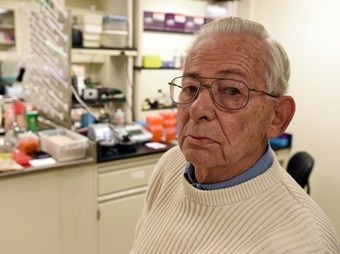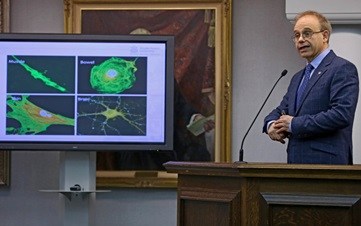PCR testing for COVID-19 makes no sense from a scientific point of view – Torsten Engelbrecht and Konstantin Demeter
Fri 9:52 am +01:00, 7 Aug 2020PCR testing for COVID-19 makes no sense from a scientific point of view – Torsten Engelbrecht and Konstantin Demeter

PCR tests for COVID-19
While the whole world relies on RT-PCR testing to “diagnose” Sars-Cov-2 infections, science is clear that they are not suitable for this purpose.
Country lockdowns and sanitation measures around the world are based on the number of cases and death rates obtained from so-called SARS-CoV-2 RT-PCR tests are used to identify “positive” patients, where “positive” is usually equated with “infected”.
PCR tests for COVID-19
However, on a closer look at the facts, the conclusion is that these PCR tests are meaningless as a diagnostic tool to determine the alleged infection with an alleged new virus called SARS-CoV-2.
The unfounded mantra “Test, test, test …
At a media briefing on COVID-19 on March 16, 2020 , WHO Director General Dr. Tedros Adhanom Ghebreyesus said:
“We have a simple message for all countries: test, test, test.”
This message has been spread in headlines around the world, for example by Reuters and the BBC .
Trusted News Initiative announces plans to fight harmful disinformation related to the coronavirus.
On May 3, the presenter Heute – one of the most important news magazines on the German television ZDF – conveyed to his viewers the mantra of the Crown Dogma with the words of a reminder:
” Test, test, test – that’s the credo at the moment, and it’s the only way to really understand how much the coronavirus is spreading.”
This indicates that the belief in the validity of PCR tests is so strong that it equals a religion that tolerates virtually no contradiction.

Walter Lippmann
However, it is well known that religions are about faith, not scientific facts. And as Walter Lippmann , two -time Pulitzer Prize winner and perhaps the most influential journalist of the 20th century, said: “Where everyone thinks the same, no one thinks too much.” – The Stakes of Diplomacy
WALTER LIPMAN ARTICLE

Penalties Mullis
It is worth noting that Kary Mullis himself, the inventor of the polymerase chain reaction (PCR) technology, did not think like today’s repeaters. His invention earned him the Nobel Prize in Chemistry in 1993.
Unfortunately, Kary Mullis died on August 7, 2019 at the age of 74, but there is no doubt that the biochemist found PCR inappropriate for detecting a viral infection.
The reason is that the intended application of PCR technology was, and still is, as a production technique capable of replicating DNA sequences millions and billions of times, and not as a diagnostic tool for virus detection.
As the pandemic virus in tests based on PCR can be a disaster described by Gina Kolata in her 2007 article in the New York Times in ” Faith in Quick Test Leads to Epidemic That Was not”.
Moreover, it is worth mentioning that the PCR tests used to identify the so-called COVID-19 patients possibly infected by the so-called SARS-CoV-2 does not have a binding gold standard with which to compare it.
This is essential. The tests must be evaluated to determine their accuracy – strictly speaking, “sensitivity” [1] and “specificity” – against the “gold standard”, the most accurate method available.

Sanjaya Senanayake
For example, for a pregnancy test, pregnancy itself would be the gold standard. Australian infectious disease specialist Sanjay Senanayake , for example, said in an interview with ABC TV in response to the question “How accurate is the [COVID-19] test?”
“If we had a new test to capture Staphylococcus aureus in the blood, we already have a blood culture, this is our gold standard that we have been using for decades, and we could match this new test to that. But for COVID-19, we don’t have the gold standard for the test. ” – COVID-Tests, Sanjaya Senanayake

Jessica C. Watson
This is confirmed by Jessica C. Watson from the University of Bristol. In his article “Interpreting COVID-19 Test Results , “ recently published in The British Medical Journal, he writes that ” there is no such clear-cut” gold standard “for COVID-19 testing.
But instead of classifying the tests as inappropriate for the detection of SARS-CoV-2 and the diagnosis of COVID-19, or rather than pointing out that only a virus, proven through isolation and purification, could be a solid gold standard, Watson is earnestly arguing that it is “pragmatically” The diagnosis of COVID-19 itself, including the PCR tests themselves, “may be the best gold standard available.” But that’s not scientifically valid.
Interview with Dr. Stefan Lanka on methodological errors in isolating viruses
Conceptual thinking versus stereotypical thinking – Andrzej Wronka, Kazimierz Ajdukiewicz
On creating class concepts and adequate, lame and jumping theories – Leon Petrażycki
Aside from the fact that adopting the PCR test itself as part of the gold standard to evaluate a PCR test is completely absurd, there are no particular symptoms specific to COVID-19, as even people like Thomas Löscher , former head of the Department of Infections and Tropical Medicine at the University have admitted to us. in Munich and member of the Federal Association of German Internal Medicine [2] .
And if there are no distinctive specific symptoms for COVID-19, a diagnosis of COVID-19 – contrary to Watson’s claim – may not be appropriate as the applicable gold standard.
Additionally, “experts” such as Jessica Watson overlook the fact that only virus isolation, that is, unequivocal evidence of a virus, can be the gold standard.
Therefore, I asked Jessica Watson how the diagnosis of COVID-19 “could be the best gold standard available” if there are no specific, specific symptoms for COVID-19, and whether the virus itself, i.e. virus isolation, would not be the best gold standard available / possible. . But she has yet to answer these questions – despite many requests. And she has not yet responded to our quick-response post [BMJ] to her article where we cover exactly the same issues, though she wrote to us on June 2 : “I will try to post a reply later this week when I have the opportunity.”
There is no evidence that the RNA is viral-only.
Now the question is: What is needed to isolate / prove a virus first? We need to know where the RNA for which the PCR tests are calibrated comes from.
According to textbooks (e.g., White / Fenner. Medical Virology, 1986, p. 9) and leading virus researchers such as Luc Montagnier and Dominic Dwyer , it is stated that purifying a particle – that is, separating an object from everything else that is not This object, for example, the Nobel laureate Marie Curie purified 100 mg of radium chloride in 1898, extracting it from tons of uranium blende – a necessary prerequisite for proving the existence of a virus and thus proving that the RNA of a given molecule is derived from a new virus.
The reason for this is that the PCR method is extremely sensitive, meaning it can detect even the smallest pieces of DNA or RNA – but it cannot tell where these molecules are coming from. This must be established in advance.
And since PCR tests are calibrated for gene sequences (in this case, RNA sequences, since SARS-CoV-2 is considered an RNA virus), we need to know that these gene fragments are part of the virus we are looking for. And in order to know this, correct isolation and purification of the alleged virus must be performed.
Accordingly, we asked the scientific teams from the reference articles, defined in the context of SARS-CoV-2, to confirm that the electron microscopy images presented in the in vitro experiments showed purified viruses.
However, neither team could answer that question with “yes” – and beware, no one said cleanup is not a necessary step. We only got responses like “No, we did not get an electron micrograph showing the degree of purification” (see below).
We asked several study authors, ” Do your electron micrographs show purified virus?” , provided the following responses:
Study 1: Leo LM Poon; Malik Peiris. “Emergence of a novel human coronavirus threatening human health” Nature Medicine March 2020
Responding Author: Malik Peiris
Date: May 12, 2020
Response: “ Image is a virus budding from an infected cell. It is not a cleaned virus. “Study 2: Myung-Guk Han et al. “Identification of Coronavirus Isolated from a Patient in Korea with COVID-19”, Osong Public Health and Research Perspectives, February 2020
Responding Author: Myung-Guk Han
Date: May 6, 2020
Response: “We could not estimate the degree of purification because we do not purify and concentrate the virus grown in the cells. “Study 3: Wan Beom Park et al. “Virus Isolation from the First Patient with SARS-CoV-2 in Korea”, Journal of Korean Medical Science, February 24, 2020
Responding author: Wan Beom Park
Date: March 19, 2020
Response: “ We have not received an electron micrograph showing degree of purification. “Study 4 : Na Zhu et al., “A Novel Coronavirus from Patients with Pneumonia in China”, 2019, New England Journal of Medicine, February 20, 2020.
Responding author: Wenjie Tan
Date: March 18, 2020
Response: “[ We show] a picture of the viral sedimentary particles, uncleaned. “
Regarding the articles mentioned, it is obvious that what has been shown in electron (EM) micrographs [or micrographs] is the end result of the experiment, which means that there is no other result from which they could produce EM.
This means that if the authors of these studies admit that their published electron micrographs do not show purified particles, they certainly do not have purified particles, which are considered viral. (In this context , it should be noted that some researchers use the term “insulation” in their work, but the procedures described therein do not represent the actual isolation (purification) process. Therefore, the term “insulation” is misused in this context .)
So the authors of four major early studies from early 2020 claiming they discovered the novel coronavirus admit they had no evidence that the source of the virus genome was virus-like particles or cellular debris, clean or contaminated, or of any kind. molecule. In other words, the existence of SARS-CoV-2 RNA is based on faith, not facts.

Dr. Charles Calisher
We also contacted Dr. Charles Calisher , who is an experienced virologist. In 2001, Science published a “hot appeal … to the younger generation” from several veteran virologists, including Dr. Calisher:
“[Modern methods of detecting viruses such as] the elegant polymerase chain reaction […] say little or nothing about how the virus multiplies, what animals carry them, or how it causes disease. [It’s] like trying to tell if someone has bad breath by looking at their fingerprint. ” [ 3]
That’s why we asked Dr. Calisher if he knew of one article where SARS-CoV-2 was isolated and ultimately really purified. His answer:
“I don’t know of any such publication. I was keeping an eye on one . ” [4]
In fact, this means that it cannot be said that the RNA gene sequences that scientists have taken from the tissue samples prepared in the mentioned in vitro studies and for which the PCR tests are finally “calibrated” belong to a particular virus – in this case SARS-CoV- 2.
Moreover, there is no scientific evidence that these RNA sequences are a causative agent of so-called COVID-19.
In order to establish a causal relationship, one way or another, i.e., beyond isolating and purifying the virus, it would be absolutely necessary to conduct an experiment satisfying Koch’s four postulates. But there is no such experiment as Amory Devereux and Rosemary Frei recently revealed to OffGuardian.
The necessity to meet these demands regarding SARS-CoV-2 is also evidenced by the fact that attempts have been made to meet them. But even the scientists claiming they did it weren’t actually successful.
One example is a study published in Nature on May 7 . This attempt, apart from other procedures invalidating the study, did not meet any of the demands.
For example, the alleged “infected” laboratory mice did not show any significant clinical signs that could be unequivocally attributed to pneumonia, which, according to the third postulate, should actually occur if a dangerous and potentially lethal virus were really active there. And the slight bristles and weight loss that have been observed in animals temporarily are negligible, not only because they may have been caused by the procedure itself, but also because body weight has returned to normal.
In addition, no animal died, except the ones they killed for autopsy. And let’s not forget this: These experiments should have been done before the test was developed, and it is not.
Significantly, none of the leading German representatives of the official theory of SARS-Cov-2 / COVID-19 – i.e. the Robert Koch Institute (RKI), Alexander S. Kekulé (University of Halle), Hartmut Hengel and Ralf Bartenschlager (German Virological Society) mentioned already Thomas Löscher , Ulrich Dirnagl (Charité Berlin) or Georg Bornkamm (retired virologist and professor at Helmholtz-Zentrum Munich) – was unable to answer the following question I sent them:
“If the particles claimed to be SARS-CoV-2 have not been purified, how can you be sure that the RNA gene sequences of these particles belong to a particular new virus?”
Especially if there are studies showing that substances such as antibiotics, which are added to test tubes in in vitro experiments for virus detection, can ‘stress’ the cell culture in such a way that new gene sequences are formed that were not previously detectable – an aspect that Nobel laureate Barbara McClintock already drew attention to during her speech at the 1983 Nobel Prize ceremony ”.
It must not be mentioned that we finally got Charité – the employer of Christian Drosten, the most influential German virologist on COVID-19, advisor to the German government and co-developer of the PCR test, which was the first to be “approved” ( not approved / validated! ) By the WHO around the world – to answer questions on this topic.
However, we didn’t get answers until June 18, 2020, after months of no response. In the end, we only managed to achieve this with the help of the Berlin lawyer Viviane Fischer .
Regarding our question, ” Has Charité convinced itself that proper particle purification has been carried out ?” Charité admits that it did not use purified particles.
And while they claim that ” Charité virologists are confident they are testing for the virus, ” in their article ( Corman et al. ) They state:
“RNA was extracted from clinical samples with the MagNA Pure 96 system (Roche, Penzberg, Germany) and from cell culture supernatants with the viral mini RNA kit (QIAGEN, Hilden, Germany),”
Which means they just assumed the RNA was viral.
Incidentally, the article by Corman et al, published on January 23, 2020, did not even go through the proper peer review process, and the procedures outlined in it were not accompanied by checks – although only these two things make the scientific work really solid.
Irrational test results
It is also certain that we cannot know the false-positive rate of PCR tests without extensive testing of people who are certainly virus-free, as confirmed by a test-independent method (having a strong gold standard).
It is therefore not surprising that there are several works that illustrate the irrational test results.
For example, as early as February, the health authority of China’s Guangdong province reported that people who fully recovered from a disease they called COVID-19 began testing “negative” and then tested “positive” again.
A month later, an article published in the Journal of Medical Virology found that 29 of the 610 patients in Wuhan hospital had between 3 and 6 test results, with results varying between “negative”, “positive” and “questionable”.
The third example is the Singapore study where the tests were performed almost daily on 18 patients, most of them going from “positive” to “negative” and back to “positive” at least once, or even up to five times in one patient .
Even Wang Chen , president of the Chinese Academy of Medical Sciences, admitted in February that PCR tests are ” only 30 to 50 percent accurate “; while Sin Hang Lee of the Milford Molecular Diagnostics Laboratory sent a letter to the WHO Coronavirus Response Team and Anthony S. Fauci on March 22, 2020, saying this:
“It has been widely reported in social media that RT-qPCR [quantitative reverse transcriptase PCR] test kits used to detect SARSCoV-2 RNA in human samples generate many false positives and are not sensitive enough to detect some true positive cases.”
In other words, even if we theoretically assumed that these PCR tests could really detect a viral infection, the tests would be practically worthless and would only cause unfounded fear among those who tested “positive”.
It also becomes obvious when you consider the positive predictive value (PPV).
The PPV indicates the probability that a person who tests positive is truly “positive” (i.e. has a pseudo-virus) and this depends on two factors: prevalence of the virus in the overall population (prevalence) and test specificity, i.e. the percentage of people without the disease who will be tested it is correctly “negative” (a test with a specificity of 95% is incorrectly positive in 5 out of 100 uninfected people).
With the same specificity, the higher the incidence [prevalence], the higher the PPV.
In this context, on June 12, 2020, the journal Deutsches Ärzteblatt published an article in which the PPV was calculated from three different prevalence scenarios.
The results must, of course, be viewed very critically, firstly because it is not possible to calculate specificity without a solid gold standard as outlined and secondly because the calculations in the article are based on the specificity determined in Jessica Watson’s study. which, as mentioned, is potentially worthless.
However, if you draw conclusions from this, assuming that the basal specificity of 95% is correct and that we know the prevalence [prevalence], even the major medical journal Deutsches Ęrzteblatt reports that the so-called SARS-CoV-2 RT-PCR tests can have ” shockingly low “ PPV.
In one of the three scenarios, taking into account an assumed prevalence of 3%, the PPV was only 30%, which means that 70% of the “positive” people surveyed were not “positive” at all. However, “they are quarantined,” as Ärzteblatt even critically notes.
In the second scenario in this article, a 20 percent prevalence is assumed. In this case, they generate 78% PPV, which means that 22% of the “positive” tests are false “positive”.
That would mean: If we were to consider the approximately 9 million people who are currently recognized as “positive” worldwide – assuming the real “positives” really have a viral infection – we would get almost 2 million false “positives”.
All of this fits in with the fact that, for example, the CDC and the FDA admit in their papers that the so-called “SARS-CoV-2 RT-PCR tests” are not suitable for the diagnosis of SARS-CoV-2.
For example, in the document ” CDC 2019-Novel Coronavirus (2019-nCoV) Real-Time RT-PCR Diagnostic Panel” of March 30, 2020, it says that:
“The detection of viral RNA must not indicate the presence of an infectious virus or that 2019-nCoV is a clinical symptom.”
And:
“This test cannot rule out diseases caused by other bacterial or viral pathogens.”
In turn, the FDA admits that:
‘Positive results […] do not exclude bacterial infection or co-infection with other viruses. The detected factor may not be the definitive cause of the disease. ” – p. 2, Accelerated Emergency Use Authorization (EUA) Summary Covid-19 Rt-Pcr Test
Interestingly, in the instructions for PCR tests you can read that they are not intended for diagnostic tests, as in the Altona Diagnostics and Creative Diagnostics manuals [5] .
To quote one more thing, in the announcement of LightMix Modular Assays products manufactured by TIB Molbiol – which were developed using the protocol of Corman et al. and distributed by Roche concern – we can read:
“These tests are not intended to be used as an aid in the diagnosis of coronavirus infection.”
And:
“For research purposes only. Not for use in diagnostic procedures. “
Where is the evidence that the tests can measure “viral load”?
There is also reason to argue that Roche’s PCR test and others cannot even detect target genes.
Moreover, the product descriptions of the RT-qPCR tests for SARS-COV-2 state that they are “qualitative” tests , despite the fact that the “q” in “qPCR” stands for “quantitative”. And if these tests aren’t “quantitative”, they don’t show how many viral particles are in the body.
This is important because in order to even start talking about a real disease in the real world, not only in the laboratory, the patient would have to have millions of viral particles actively replicating in his body.
In other words, the CDC, WHO, FDA or RKI may claim that the tests can measure what is known as “viral load”, ie the number of viral particles in the body. “ But it has never been proven. This is a huge scandal, ” points out journalist Jon Rappoport .
This is not only because the term “viral load” is a scam. If you ask the question “what is a viral load?” at a dinner party, people consider this to be viruses circulating in the bloodstream. Surprised, they learn that these are actually RNA molecules.
Furthermore, in order to prove beyond reasonable doubt that the PCR test can measure how much “burdened” a person is with the virus causing the disease, the following experiment (which has not yet happened) would need to be performed:
We take, say, a few hundred or even a thousand people and take tissue samples from them. Make sure the people who collect the samples are not doing the test. Testers will never know who the patients are or what their condition is. Testers perform PCR on tissue samples. In any case, they say what virus they found and how much they found. Then, for example, in patients 29, 86, 199, 272 and 293, they found much of what they claimed to be a virus. Now we discover these patients. They should all be sick because they have so many viruses replicating in their bodies. But are they really sick, are they as healthy as a fish?
With the help of the aforementioned lawyer Viviane Fischer, I was finally able to get from Charité an answer to the question of whether the test developed by Corman et al. “Drosten PCR test” – is it a quantitative test?
But the Charité representatives were not inclined to answer this question “yes”. Instead, they wrote like this:
‘Where real-time RT-PCR is concerned, to Charité’s knowledge they are in most cases […] limited to qualitative detection.’
Furthermore, the “Drosten PCR test” uses the non-specific E-gene test as a pre-test , while the Institut Pasteur uses the same test as a confirmatory test.
According to Corman et al., The E-gene test probably detects all Asian viruses, while the rest of the tests in both tests are expected to be more specific for sequences labeled “SARS-CoV-2”.
In addition to the dubious purpose of performing an initial or confirmatory test that would likely detect all Asian viruses, the WHO changed the algorithm in early April, recommending that the test should henceforth be considered “positive” even if only the E-gene test (which would likely detect all Asian viruses!) is “positive”.
This means that a confirmed non-specific test result is officially marketed as specific.
This algorithm change increased the number of “cases”. Tests using the E-gene test are produced, for example, by Roche , TIB Molbiol and R-Biopharm .
High Cq values make the test results even more meaningless
Another significant problem is that many PCR tests have “cycle quantification (Cq)” values above 35, and some, including Drosten’s PCR test, even have a Cq value of 45.
The quantification cycle value [Cq] determines how many cycles of DNA replication are required to detect an actual signal from biological samples.
“Cq values greater than 40 are suspect due to the alleged low efficacy and should generally not be reported,” as stated in the MIQE guidelines .
MIQE stands for “Minimum Information for Publication of Quantitative Real-Time PCR Experiments”, a set of guidelines describing the minimum information necessary to evaluate real-time PCR publications, also known as quantitative PCR or qPCR.
The inventor himself, Kara Mullis, agreed with this statement :
“If you have to do more than 40 cycles to amplify a single copy of a gene, something is seriously wrong with your PCR.” – p. 8, PCR Protocols: A Guide to Methods and Applications

Professor Stephen A. Bustin
The MIQE guidelines were developed under the aegis of Stephen A. Bustin , professor of molecular medicine, an internationally renowned expert in quantitative PCR and author of the AZ Quantitative PCR book, which has been called the “qPCR bible”.
In one of the recent podcast interviews, prof. Bustin notes that “the use of such arbitrary quantification cycle cutoffs [Cq] is not ideal as they can be either too low (eliminating valid results) or too high (increasing the number of false” positives “).”
The Infectious Myth – Stephen Bustin on Challenges with RT-PCR
https://www.podbean.com/media/player/znrvk-d932a7
According to him, one should aim for a Cq from 20 to 30 several, because there are concerns about the reliability of the results for any Cq above 35.
If the Cq value becomes too high, it will be difficult to distinguish the real signal from the background, for example due to the reaction of the primers and fluorescent probes, and therefore, false positives are more likely to occur.
Also, among other factors that may alter the result, before starting the actual PCR test, in case you are looking for putative RNA viruses like SARS-CoV-2, the RNA must be converted to complementary DNA (cDNA) with the Reverse Transcriptase enzyme – hence “RT” at the beginning of “PCR” or “qPCR”.
However, this transformation process is ” widely recognized as ineffective and volatile,” noted Jessica Schwaber of the Toronto Center for Commercialization of Regenerative Medicine and two research associates in a 2019 article.
Professor Stephen A. Bustin sees similar problems with PCR testing.
For example, he pointed to the problem that during the conversion process (RNA to cDNA), the amount of DNA obtained from the same RNA base material can vary significantly, up to 10 times ( link to the interview ).
Given that DNA sequences are doubled each cycle, even a small amount of variation increases and can thus alter the result, destroying the reliable informational value of the test.
How is it possible that those who claim that PCR tests are of great importance to the so-called diagnosis of COVID-19 turn a blind eye to the basic shortcomings of these tests – even when confronted with questions about their validity / reliability?
Certainly, the apologists of the new coronavirus hypothesis should have addressed these questions before they threw the tests on the market and shut down basically the whole world, especially because these are questions that immediately come to the mind of anyone who has even a spark of scientific understanding of the issue.
It is therefore inevitable to think that financial and political interests play a decisive role in this ignorance of scientific obligations. By the way, WHO, for example, has financial ties to pharmaceutical companies, as the British Medical Journal showed in 2010.
How Bill Gates Monopolized Global Health
And experts have criticized that “since then, notorious corruption and the number of conflicts of interest within WHO has persisted and even increased.” Also, the CDC is obviously not in a better position to take on another big player .
COVID-19 PCR testing from a scientific point of view
Finally, the reasons and possible motives remain in the realm of speculation, and many of those involved are certainly acting in good faith, but the science is clear: the numbers generated by these RT-PCR tests do not in the least justify frightening the people who have been subjected to these tests. and they have obtained a “positive” result and imposing blocking measures that plunge countless people into poverty and despair and even drive them to suicide.
Will ‘deaths from despair’ exceed those from coronavirus? – Dr. Toby Rogers
The genesis of the idea of ”Lockdown” dates back to 2006 – Jeffrey A. Tucker
And a “positive” result can also have serious consequences for patients, since then all non-viral agents are excluded from diagnosis and patients are treated with highly toxic drugs and invasive intubations. Especially in the elderly and patients with pre-existing conditions, such treatment can be fatal, as described in the article “Mortal Therapy”.
Undoubtedly, possible excessive mortality is due to medical interventions and the closures of entire countries, while the statistics of deaths classified as “COVID-19” also include patients who died from various diseases, redefined as COVID-19 only due to a “positive” test result which the value couldn’t be more questionable.
Comments:
[1] Sensitivity is defined as the proportion of disease-free patients who test positive and specificity as the proportion of disease-free patients who test negative.
[2] Email von Prof. Thomas Löscher on March 6, 2020.
[3] Martin Enserink. Virologia. Old guard urges virologists to go back to basics, Science, July 6, 2001, p. 24
[4] Email from Charles Calisher on May 10, 2020
[5] Creative Diagnostics, SARS-CoV-2 Coronavirus Multiplex RT-qPCR Putty.
Authors:
Torsten Engelbrecht is an award-winning journalist and author from Hamburg. In 2006, together with Dr. Klaus Kohnlein, he published a book entitled Virus-Mania, and in 2009 received the German Alternate Media Award. He has also written for Rubikon, Zeitung, Financial Times Deutschland and many others. PCR tests for COVID-19.
Konstantin Demeter is a freelance photographer and freelance researcher. Together with journalist Torsten Engelbrecht, he published articles on the “COVID-19” crisis in the Rubikon online magazine, as well as articles on the monetary system, geopolitics and media in Swiss and Italian newspapers. PCR tests for COVID-19.
Source: COVID19 PCR Tests are Scientifically Meaningless










